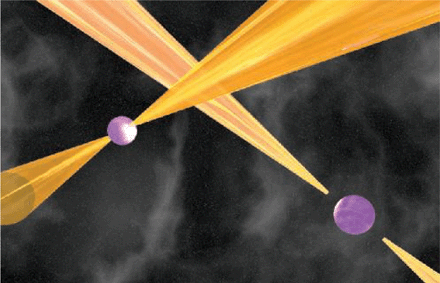|
It's the Astronomy Online non-Blog, or un-Blog.
Everyone has a blog now and since I am no follower of trends, I decided to merge the blog with the website. And I don't want to neglect the website in favor of posting on the blog.
These are the pages that were on the blog of old:
- Home
- Archive (Index of Pages)
- Me
- Current Trends
- Links
- Soho Live
Links:
Google Maps - Mars
Google Maps - Moon
HiRISE
HiRISE - MRO Imaging
Mac Singularity
Meade4M
Slackerpedia Galactica
Software for the Mac
Starry Night Online
Venus Maps
More Favorites:


































Thank you for visiting!
|
|
 |
|
Einstein's General Relativity Passes Another Test:
Albert Einstein's General Relativity theory has passed yet another test - this time using long-term observation of binary pulsar PSR J0737-3039A/B. This particular binary pulsar is detectable in the radio wavelengths and have high orbital velocities. Over the course of 2 and a half years, observed orbital dynamics were compared to models of Keplerian orbits with relativistic corrections and there was only a 0.05% error between the two - the most precise measurement obtained to date.

In simple terms, a computer model was created using the same parameters as the binary pulsar. Keplerian mathematics were used to control the orbit and the effects of Relativity, as predicted by Einstein, were applied. This was compared to the observed behavior of the binary pulsar. For more details on how Keplerian mathematics are applied to orbital dynamics, please read my essay on the Gliese 876 system of planets.
Einstein's General (and Special) theories of Relativity discuss the nature of light and gravity. One of the more difficult concepts of Relativity is the nature of reference frames which can be summed up as "moving clocks run slow." If we were to travel near the speed of light, our aging would slow. Despite this, Relativity maintains that the speed of light is the same in any reference frame and the laws of physics apply to all reference frames as well.
This new data supports the theory that matter and energy can warp space-time; it also prevents any "adjustments" to Relativity. A drawback to this new data is its affect on Quantum Mechanics, which deal with things like string theory (Quantum Mechanics is a mathematical model used to predict the behavior of microscopic particles). There have always been incompatibilities between Relativity and Quantum Mechanics. While this blog entry will in no way do justice to describe both General Relativity and Quantum Mechanics, an example is an atomic clock. In Relativity, the moving clock - even an atomic one - will run slower. In Quantum Mechanics, an atomic clock can be slowed by changing the frequency of the atomic source of the the clock. Quantum Mechanics also imply gravity as a particle. Think of Quantum Mechanics is to linear mathematics as Relativity is to non-linear mathematics.
Other tests for Einstein's Relativity: the perihelion shift of Mercury, the gravity lensing of distant galaxies and the deflection of light by gravity, and the Gravity B Probe.
IMAGE CREDIT: MICHAEL KRAMER/JODRELL BANK OBSERVATORY, UNIVERSITY OF MANCHESTER
References:
Science DOI: 10.1126/science.1132305. September 14, 2006
Science 15 September 2006: Vol. 313. no. 5793, pp. 1556 - 1557 DOI: 10.1126/science.313.5793.1556b
Astronomy Online - Cosmology
Next Post | Previous Post | Back to Top
|
|

